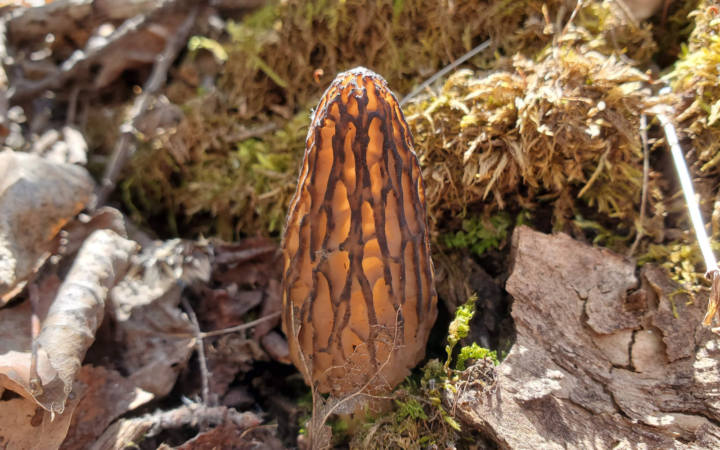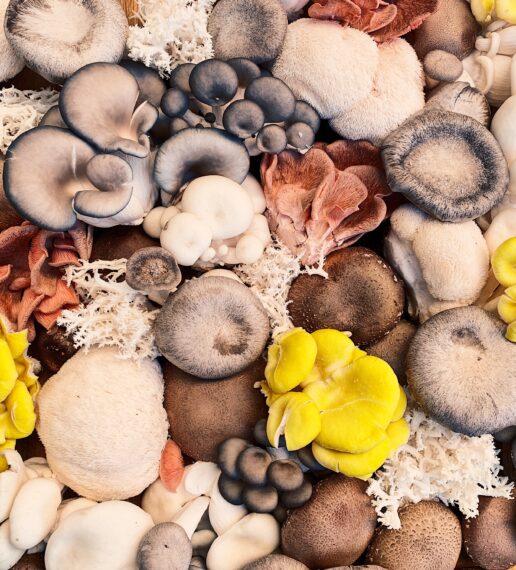Hunting For Morel Mushrooms
Contents
Every spring, mushroom hunters all over the world head out into the woods.
Basket in hand, with pants tucked into their socks, these mycophagists (aka mushroom eaters) trample through the brush, scanning the ground with a fierce intensity.
So… what natural phenomena could possibly bring out this strange behavior?
Of course, it’s the morel mushroom.
What Are Morel Mushrooms?
One of the most highly prized wild mushrooms in the world, Morel Mushrooms are an edible ascomycete fungus with a unique honeycomb style fruitbody.
The name “Morel” is actually used to describe a number of different species (morchella elata, morchella esculenta, morchella diminutive, ect.), but to most, this distinction is not important.
The only thing that matters for people hunting morels is that it’s a “True Morel”, ie. a mushroom belonging to the genus “Morchella”.
What Makes Them So Special?
On a most basic level, properly cooked Morel mushrooms are beyond delicious. Chefs love them- as they add amazing flavor, texture, and wild intrigue to a variety different meals.
Part of the allure, however (and the reason for morel hunting), is the relative scarcity.
Morel mushrooms are a “mycorrhizzal fungi”, meaning that they naturally form a symbiosis with other trees. The mushroom relies on the roots of the tree for sugars, and the tree relies on the mycelium of the mushroom for nutrients and water.
This makes Morels extremely difficult, if not impossible, to cultivate commercially. In other words, they need to be harvested from the wild.
But Morels are truly untamed.
Even if you know where to look, and have found them before, a basket full of Morel mushrooms is no guarantee. They tend to pop up randomly and only for a short period of time. Not only that, morels camouflage well on the forest floor and can be very hard to spot.
For these reasons, fresh morels tend to be in short supply, and generally only available in the spring- which is why they can often be sold for a hefty price. Some skilled (and lucky) mushroom hunters can make upwards of $1000 per day foraging for Morel Mushrooms.
As you can imagine, it can get fiercely competitive.
Even people only hunting for their own use are unlikely to give up the coordinates to their prime pickin’ grounds. That’s why you need to learn how to find them yourself!
What Does A Morel Mushroom Look Like?
Although hard to see, Morel Mushrooms are quite easy to identify.
Here’s a picture of a morel mushroom:
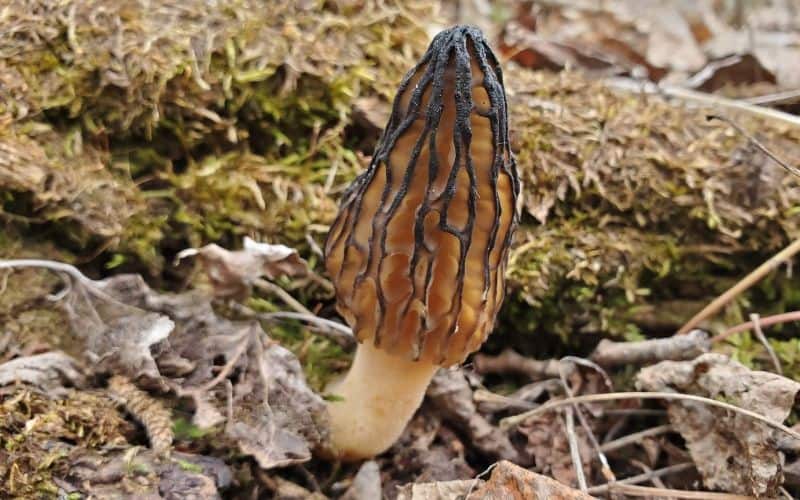
What do you notice?
- It has a pitted cap, that kind of resembles honeycomb
- It is brown/black (this is a black morel but can also be straight yellow/brown like the yellow morel)
- It is cone shaped (some can be bulbous instead)
Keep in mind, morels can look quite different depending on the species- so color and shape alone won’t tell you whether or not it’s a morel.
Now, cut it in half. This is a fool-proof way to ensure that you have a Morel.
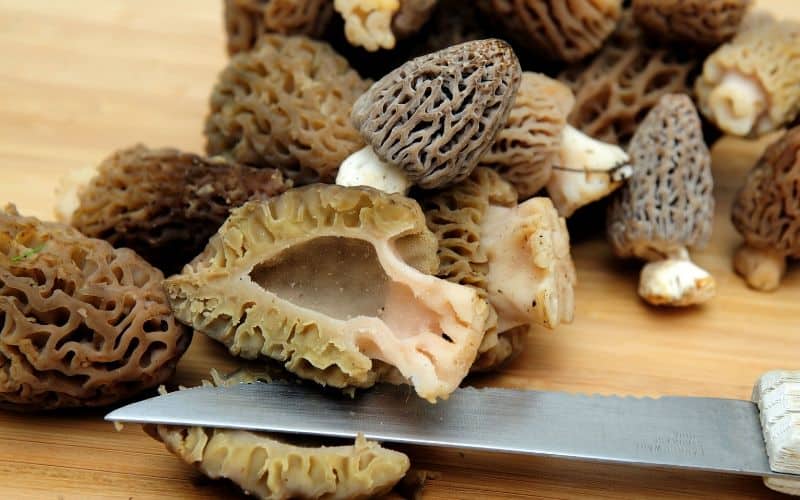
As you can see, the Morel has a totally hollow inside, and the cap is completely attached to the stem.
The only exception to this would be the “half-free” morel, which, as the name implies- has a cap that is only half-attached to the stem. However, it will still have a hollow inside.
Other Identification Tips:
- As always, when in doubt, throw it out (no mushroom is so good that it’s worth a risk)
- Morels fruit in the spring, typically the first few warm days after a spring rain
- They usually grow right near other trees (could be hardwoods or conifers)
- Can fruit singly or in bunches
- They can range greatly in size from 1” – 6” +
- If you find one- look hard… you are likely to find more
True Vs. False Morel
Morel mushrooms are easy to identify, even for beginners.
Still, there are two other mushrooms, sometimes referred to as “false morels” that you should be aware of so that you can safely avoid them.
These are Gyromitra esculenta (or other similar gyromitra species) and Verpa bohemica (or sometimes Verpa conica).
So what’s the difference?
First off, both Gyromitra and Verpa have brain-like folds in the cap, which are quite different than the deeply pitted “honey-comb” style of the true morel.
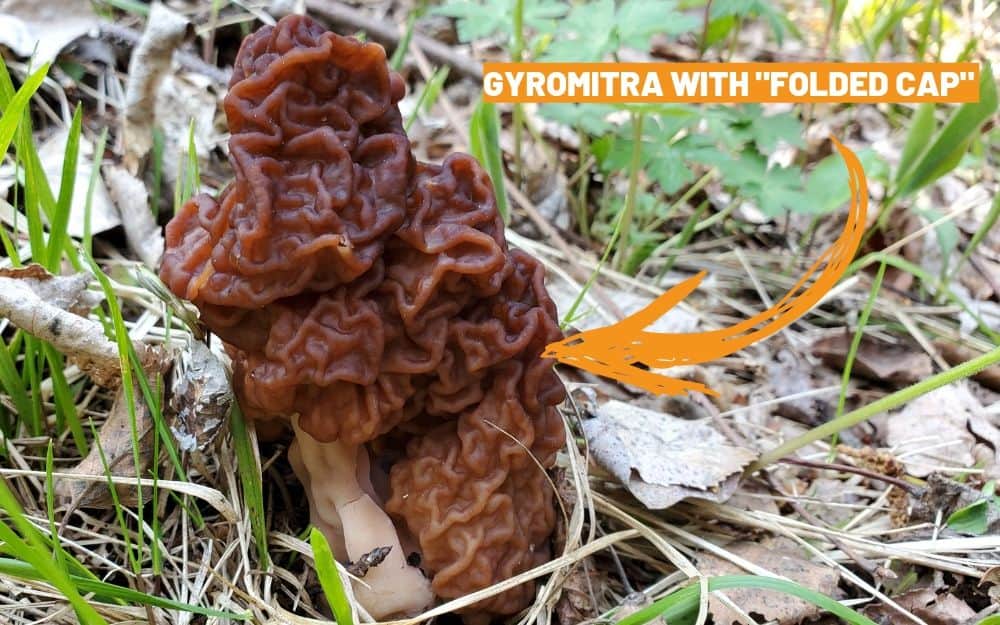
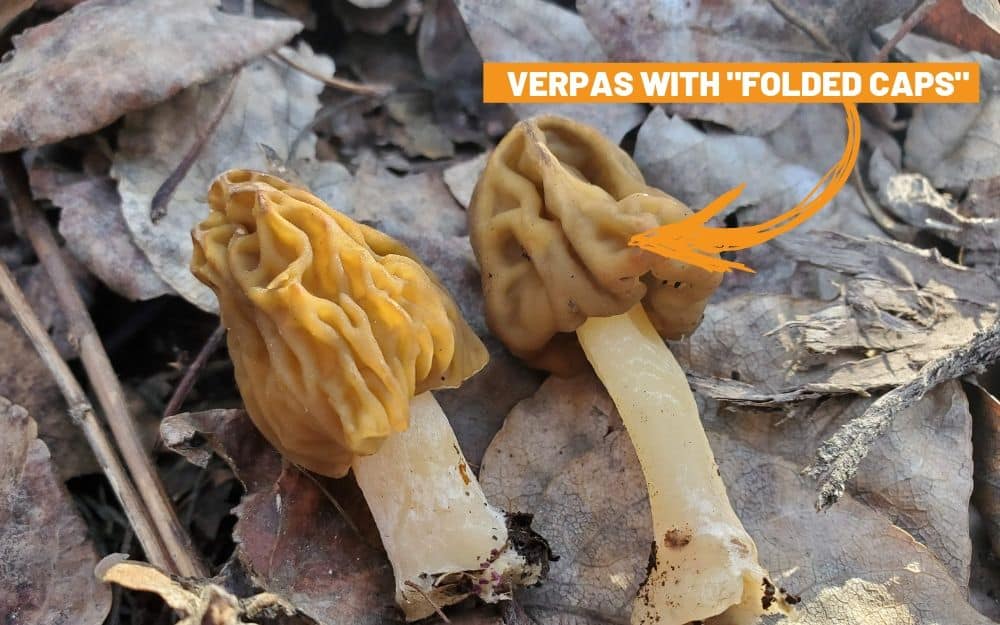
But the best way to tell is to cut the mushroom in half, from the top of the cap all the way through the stem.
If you cut a Gyrromitra in half, you’ll see that the insides are all folded together, and there is no distinct hollow center like the true morel.
If you cut a Verpa in half, you’ll see that the cap is only attached at the very top of the stem. The inside is not hollow, and can sometimes be “cottony”. Also, Verpas tend to be much morel delicate than true morels.
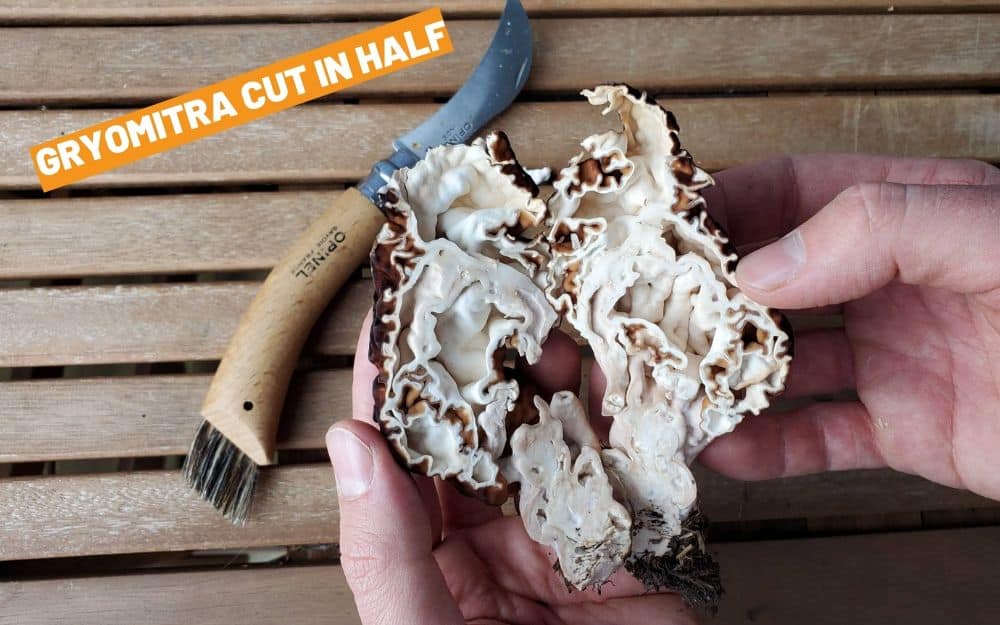
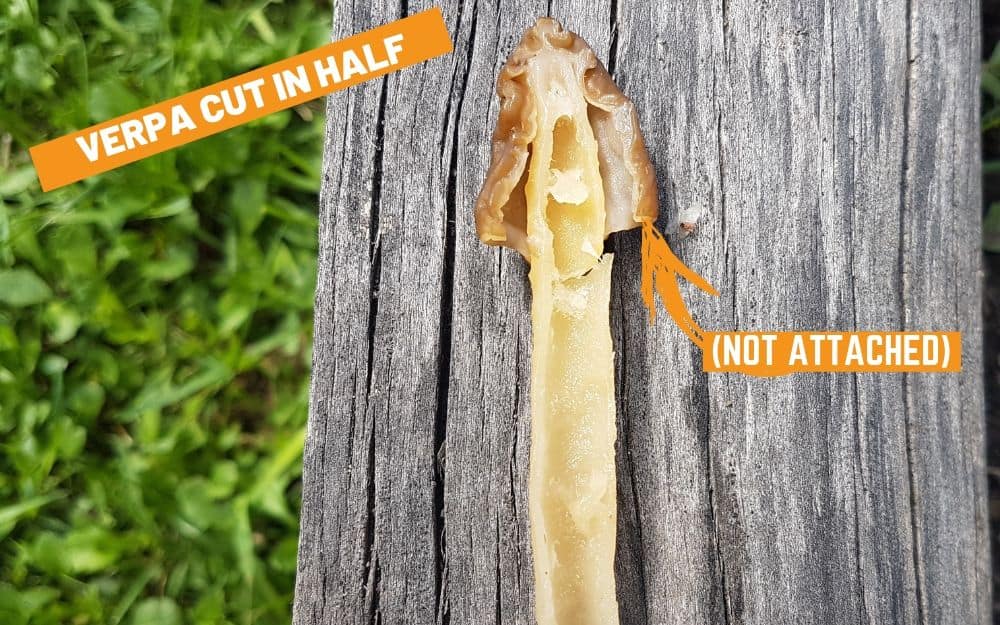
Where Should I Look For Morels?
Morels can pop up anywhere, but there are some general guidelines to follow to increase your chances of finding them.
Look first on south facing slopes, in semi-open areas of mixed hardwood forest. Morels fruit depending on the soil temperature, and a south facing slope is most likely to be in the warmer range during the spring.
Morels are also often found in urban trails, disturbed ground, and landscape mulch. Recent clear cuts, burn sites (from recent forest fires), and old apple orchards (apple trees) are also good spots to go searching for morels.
In some areas, it is really important to first learn your trees. In the Northeastern US, you are most likely to find morels fruiting near elm trees (dead elm trees specifically), and finding the tree before you look for morels is usually the best strategy.
Should I Pull Them or Cut Them?
There seems to be a common misconception that pulling the mushrooms out of the ground damages the underlying organism and reduces the chance you’ll find them again next year.
As far as I can tell, that doesn’t seem to be true at all.
Mycelium is incredibly resilient, and pulling up the fruit shouldn’t do any harm at all.
The only downside to pulling the mushrooms is that you’ll end up with a lot of dirt on your fruits, which won’t happen if you cut them off instead.
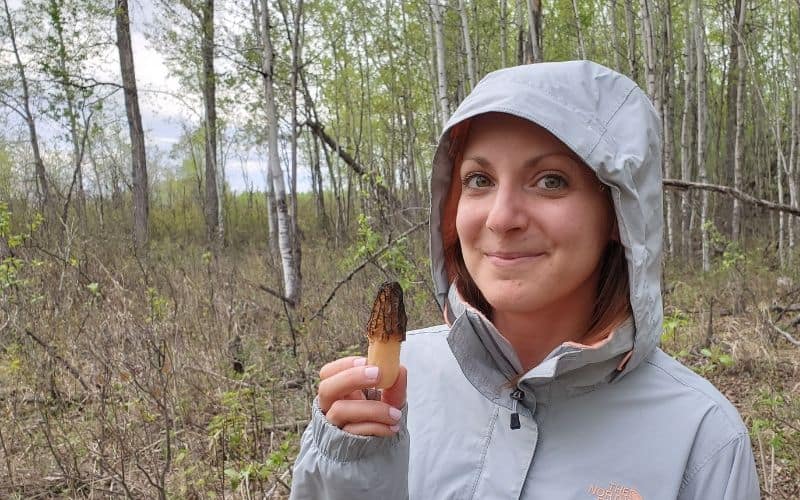
Morel Mushroom Hunting Tips
Ready to get out there and find some morels? Here are some of the top tips for your first Morel hunt.
1. Look At Right Time Of Year
Although freak out-of-season fruitings are possible, you are really only likely to find Morels a few weeks during the year. Morel season occurs during the spring. The exact time will vary based on your climate and local geography.
Best bet is to head out on the first few warm days after a good spring rain. In Alberta where I live, that is usually around the last week of May but can extend well into June. Ask around to find out the best hunting season for your area.
2. Look In The Right Locations
Morels can grow anywhere, but they do not grow everywhere. Your best bet is to look in a highly favourable location – which will depend on where you live. For me (Central Alberta) that’s a south facing slope in mixed hardwood forest.
As mentioned above, disturbed areas, urban landscapes, recent burn sites, and old apple orchards can be great foraging grounds.
3. Learn Your Trees and Local Ecology
Morels grow in symbiosis with other trees, and it can often be a better strategy to look for the trees before you look for the mushrooms.
As always, these mushroom-tree relationships will vary greatly depending on where you live.
4. Look Hard (Then Look Harder)
Finding morel mushrooms can be tough, as they can be incredibly hard to see.
I have missed morels inches from my face. They are often covered in leaves or brush, and even when they are exposed they camouflage well.
Once you see one, however, you can get an imprint of the mushroom in your minds eye, and are much more likely to find more.
5. Go With Your Local Club
If you have never found morels before, it can be hard to know where to start. You local mycological society or club will likely have a spring foray that you can join to learn the ropes.
(check NAMA for a club near you)
Not only will you learn about the locations of prime foraging ground, but you’ll also be able to have an experienced morel hunter confirm the identity of your finds. It’s the best way to learn!
6. Watch Out For Ticks
Where you find morels, you also likely to find ticks. Ugh.
Make sure you wear long pants, with the legs tucked into your socks- and have a good tick-check strategy at the end of the day!
7. Bring A Basket
Not bringing a basket is a common mistake for first time foragers. Sure, they look kinda lame- but they really are the best way to carry around your mushrooms!
Buckets or plastic bags will cause the mushrooms to get soggy before you get a chance to eat them.
Plus, a basket will allow the spores from your harvest to be dispersed through the woods as you continue to hunt. (you’ll be like johnny-morel-spore!)
If you really don’t want to use a basket, you can always use a mesh bag. Paper bags work pretty good as well.
8. Don’t Get Lost
When wandering around in the woods with your head down, it’s very possible that you can get turned around. Being lost in the woods is no joke.
At the very least, bring a compass so you can navigate back to the nearest road. Even better, bring a GPS and always go foraging with a buddy.
What To Bring Morel Mushroom Hunting
There are a few items you should consider bringing on your first morel hunt:
- A guidebook
- A mushroom knife
- A basket or mesh bag
- Pants and solid footwear
- Bug spray
- A compass or gps
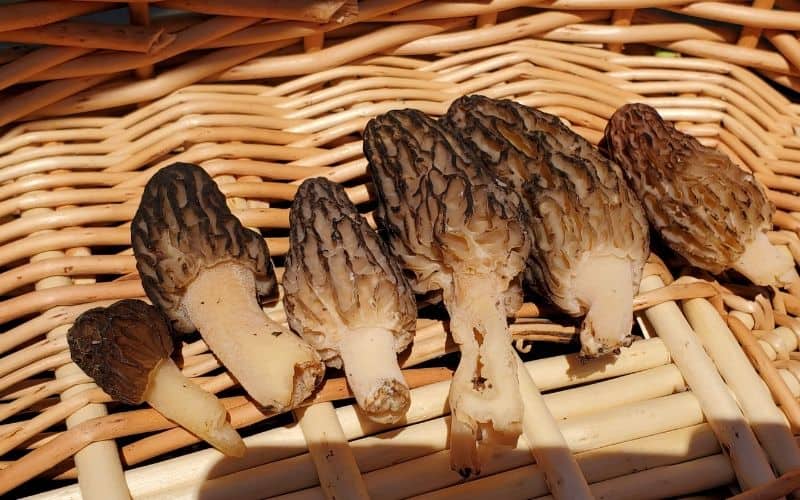
Worth Hunting For
No matter where you are in the world, there is a really good chance that you can find morels in the spring.
They are amazingly delicious, easy to identify, and rewarding to find.
What are you waiting for?
